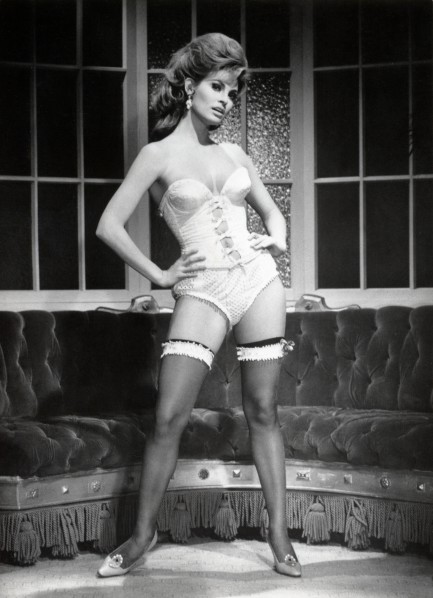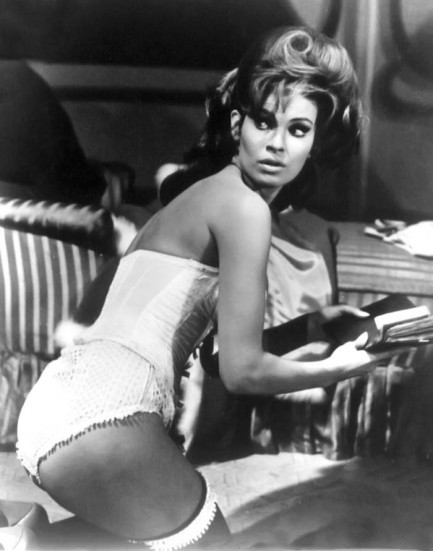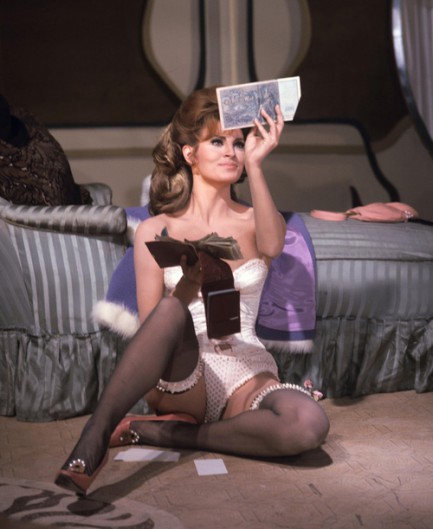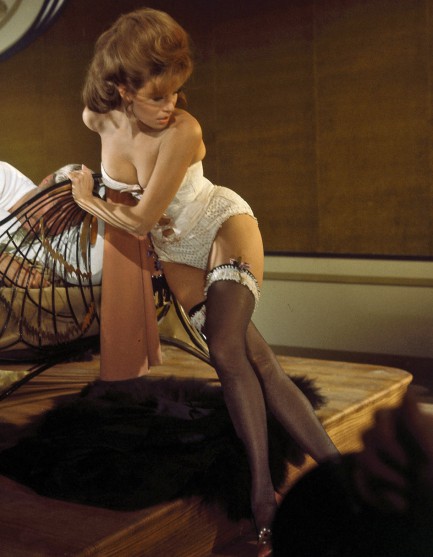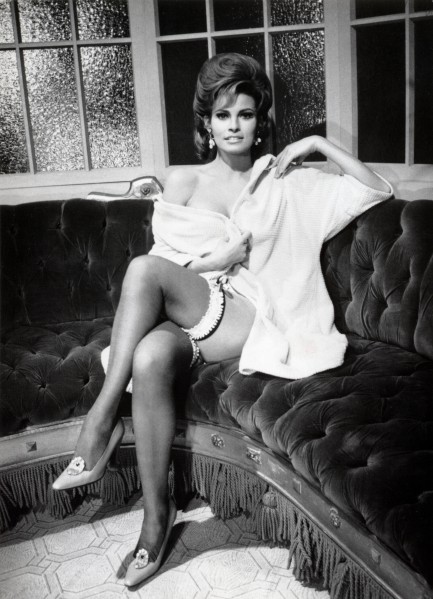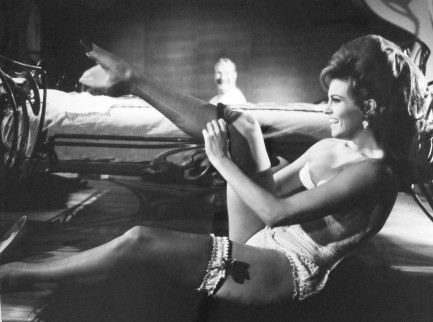 Some are on the left and others are on the right, but her position on guns is in the middle. 
This image of German born French actress Dorothée Blanck appeared on the cover of France's Cinémonde magazine today in 1965. Blanck died in January at the age of 81 after decades in cinema, including roles in Jean-Luc Godard's Une femme est une femme, Jean Renoir's Elena et les hommes, and Jacques Demy's Les parapluies de Cherbourg. She came from the humblest of beginnings—born in prison in Aichach, where her mother was serving time for political crimes like numerous leftists resistant to the rising Nazis; shuttled around to various orphanages and institutions; not even given an official name for the first two years of her life. Her film career began in 1953 and, with occasional lulls, she worked often throughout her life, appearing in some forty films. Her last project, entitled Jours de France, or Days of France, is in post-production and is slated to hit cinemas sometime this year.
 She’s a classic work of art, and the sculpture isn’t bad either. 
American actress Christa Lang is known for her many collaborations with director and husband Samuel Fuller, including The Naked Kiss, Shock Corridor, Underworld U.S.A., and his underrated racial drama White Dog. She also appeared in Jean-Luc Godard’s Alphaville, Peter Bogdanovich’s What’s Up Doc? and has already wrapped The Queen of Hollywood Blvd., to be released later this year. The above shot, showing her in front of a backdrop depicting Jean-Baptiste Carpeaux’s famous sculpture "La danse," which is located on the façade of the Opera Garnier in Paris, appeared in the Spanish magazine Triunfo in 1965

 Getting the most out of challenging positions. 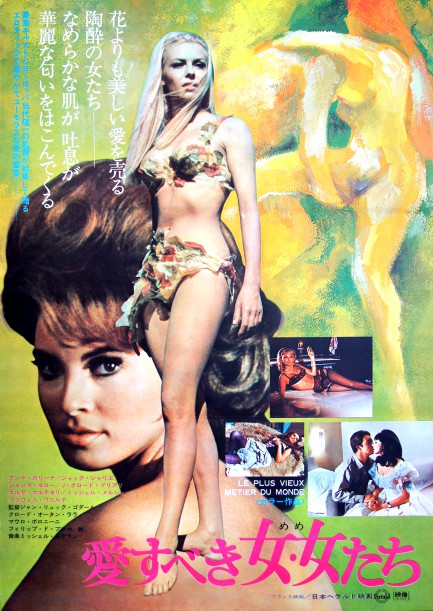
Did we not just see Raquel Welch yesterday, as well as earlier this week? Indeed we did, but we assume you don’t mind the return engagement. This Japanese poster with her and Michèle Mercier was made to promote the comedy Le plus vieux métier du monde, aka The Oldest Profession, which played in France in 1967 but didn’t appear in Japan until today in 1971. We watched it last night, and it's a six-part anthology dealing with prostitution through the ages. For example, the first sketch is set during prehistory—that time inhabited by slender Anglo Saxon fashion models—another is set in ancient Rome, and another during the Parisian gay nineties, where Welch makes her appearance wearing corsets and speaking French. The last segment, directed by Jean-Luc Godard, takes place in the future. Or what used to be the future in 1967—the year 2000.
While all the skits deal with prostitution, some also deal with money, and the efforts of the female characters to obtain it. For instance Welch finds out her dumpy customer is a banker and the rest of the segment follows her ultimately successful gambit to trick him into marrying her. Besides Welch and Michèle Mercier, the movie features top sixties sex symbols Elsa Martinelli, Jeanne Moreau, Anna Karina, Marilù Tolo, and Nadia Gray. That's a lot of star power in a somewhat low wattage movie, but there are laughs here, as long as you accept going in that comedies about prostitutes are not in any way realistic or politically correct. One great by-product of Le plus vieux métier du monde was a great Welch promo shoot, of which we have photos below. These will probably make you want to watch the film no matter what we think of it.
 Anna Karina gives an ancient place a touch of contemporary beauty. 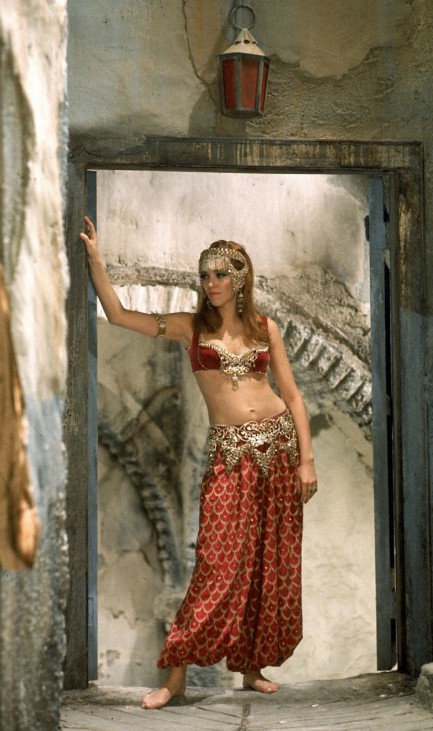
Anna Karina, née Hanne Karin Bayer, is a famed model, novelist, singer, and award-winning actress, who was a muse of French director Jean-Luc Godard, and star of such films as Alphaville, A Woman Is a Woman, and Chinese Roulette. She has also directed two movies, with the latest appearing in 2008. All very amazing, considering she was homeless and unable to speak French when she was discovered by an advertising exec in a Paris café at age seventeen. The above photo was made in Tunisia (standing in for Egypt) for her 1969 film Justine.
 Overnight to many distant cities. 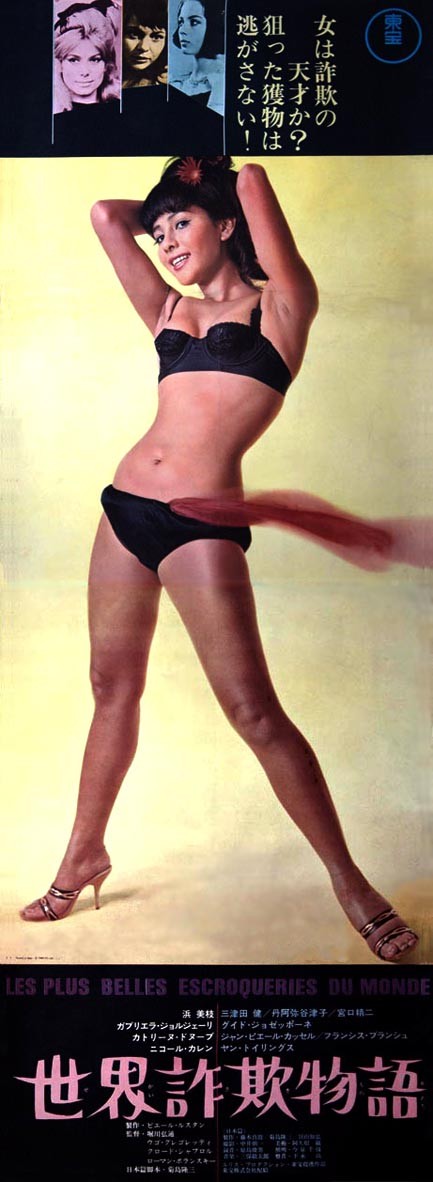 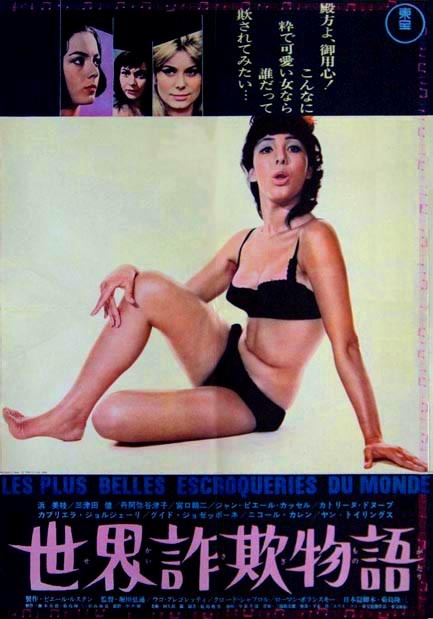
Above are two lovely Japanese posters for the French film Les plus belles escroqueries du monde, aka The World’s Most Beautiful Swindlers. It’s an anthology divided into four segments shot by four directors—Claude Chabrol, Francis Ford Coppola, Hiromichi Horikawa, and Jean-Luc Godard. Not a slouch in the bunch, and the film, which is about crimes committed by four larcenous women in various cities across the globe, is said to be quite entertaining. We haven’t seen it yet, but when we do we’ll give you our opinion. In the meantime dig the art. Les plus belles escroqueries du monde opened in France today in 1964, and Japan in 1965.
|
 |

The headlines that mattered yesteryear.
2003—Hope Dies
Film legend Bob Hope dies of pneumonia two months after celebrating his 100th birthday. 1945—Churchill Given the Sack
In spite of admiring Winston Churchill as a great wartime leader, Britons elect
Clement Attlee the nation's new prime minister in a sweeping victory for the Labour Party over the Conservatives. 1952—Evita Peron Dies
Eva Duarte de Peron, aka Evita, wife of the president of the Argentine Republic, dies from cancer at age 33. Evita had brought the working classes into a position of political power never witnessed before, but was hated by the nation's powerful military class. She is lain to rest in Milan, Italy in a secret grave under a nun's name, but is eventually returned to Argentina for reburial beside her husband in 1974. 1943—Mussolini Calls It Quits
Italian dictator Benito Mussolini steps down as head of the armed forces and the government. It soon becomes clear that Il Duce did not relinquish power voluntarily, but was forced to resign after former Fascist colleagues turned against him. He is later installed by Germany as leader of the Italian Social Republic in the north of the country, but is killed by partisans in 1945.
|

|
|

It's easy. We have an uploader that makes it a snap. Use it to submit your art, text, header, and subhead. Your post can be funny, serious, or anything in between, as long as it's vintage pulp. You'll get a byline and experience the fleeting pride of free authorship. We'll edit your post for typos, but the rest is up to you. Click here to give us your best shot.

|
|







